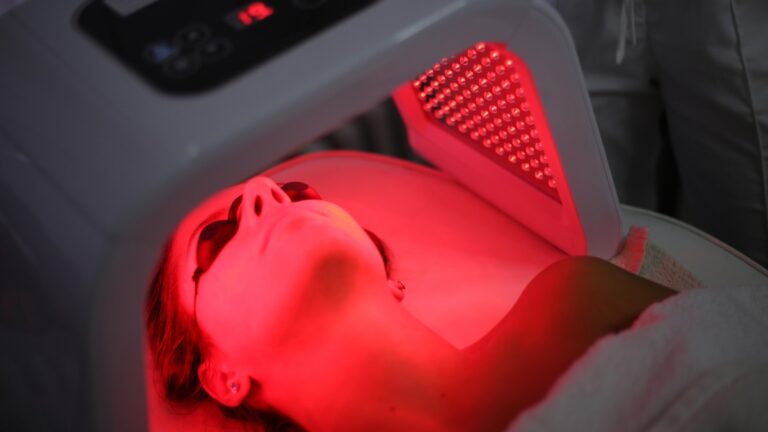How To Keep Ice Bath Water Clean? Expert Strategies!
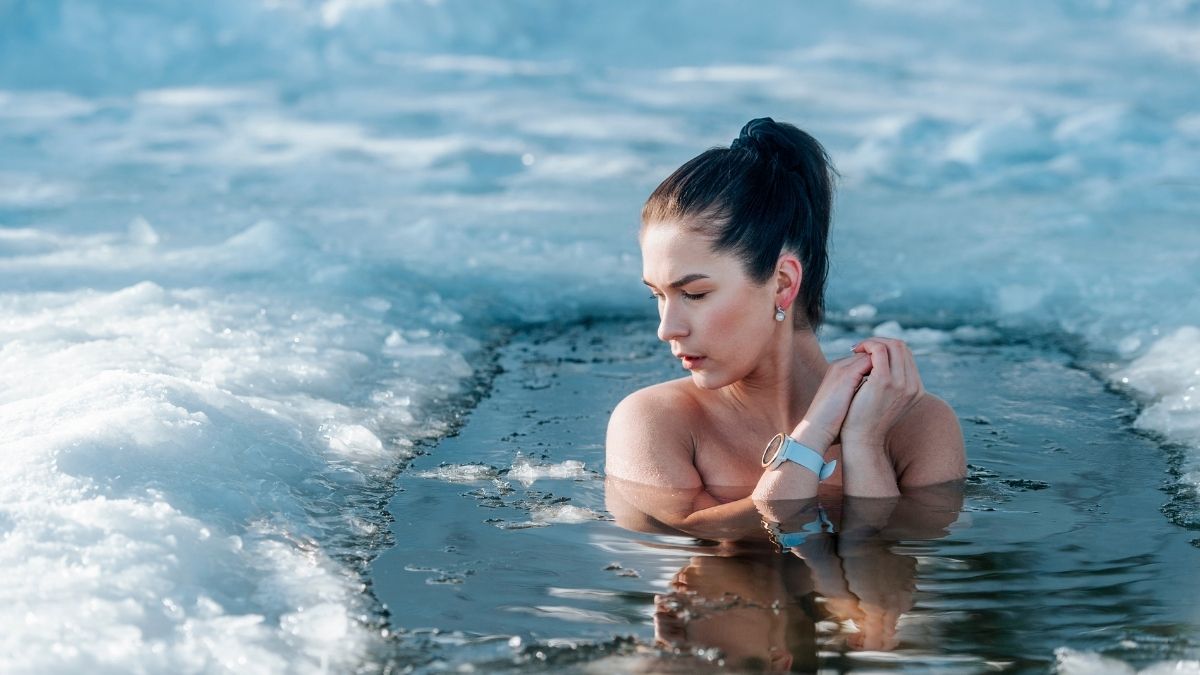
Last Updated on July 26, 2025
Have you ever opened your ice bath and been hit with cloudy water and floating grime? You’re not the only one.
Most people think clean water plus ice means a clean plunge but that’s not how it works.
Without regular care, you’re soaking in bacteria, body oils, and skin debris. Sometimes even mold.
As a registered nurse and wellness consultant, I’ve seen how dirty water doesn’t just feel off, it disrupts recovery, irritates skin, and puts your wellness at risk.
This guide breaks down exactly how to keep ice bath water clean using practical steps.
Whether you’re using a DIY bin or a high-end tub, these methods will keep your water fresh and ready.
Why Clean Ice Bath Water Matters More Than You Think
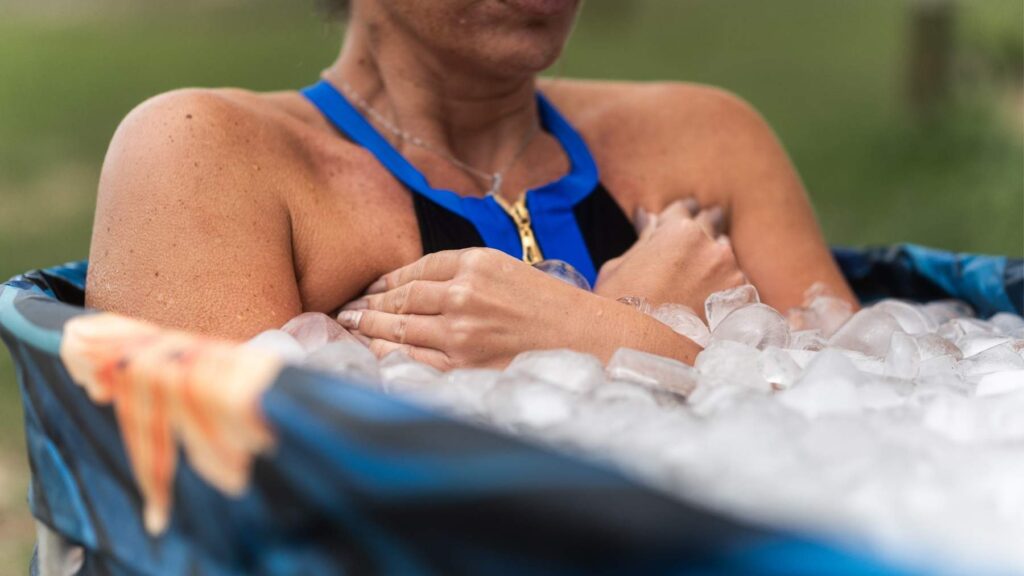
Every ice bath puts your body under controlled stress.
Your pores open, blood flushes through your tissues, and your skin hits an extreme. That makes clean water non-negotiable.
Cold temps slow bacteria, they don’t stop it. And when water sits too long or gets reused without proper care, it becomes a breeding ground.
According to the CDC, stagnant water can indeed harbor high concentrations of bacteria, potentially leading to various infections.
If you’ve ever stepped out itchy or red, that’s not “good circulation.” That’s your skin telling you something’s wrong.
Would you soak your sore body in that? Probably not.
But that’s exactly what happens when water hygiene gets ignored.
Can dirty ice bath water really affect your recovery?
Yes, and more than most people think. It stresses your skin, ruins the experience, and turns a wellness habit into a health risk.
Let’s not let it get there.
How Often Should You Change Ice Bath Water?
This question pops up all the time, and the answer isn’t one-size-fits-all.
The ideal frequency depends on a few key variables: how often you use the tub, how many people share it, and what kind of filtration or additives you’re using.
Here’s what I recommend as a baseline:
- If you’re using a basic plastic bin or DIY setup, change the water every 1–2 uses — especially if you’re not filtering or circulating it.
- If you’re in a personal plunge tank with a circulation pump and basic filtration, you can push it to once a week, as long as you’re using safe disinfectants.
- For shared commercial units, or if more than one person uses it daily, change or treat the water every 1–2 days without fail.
More users = more contamination. That’s a universal truth.
Every time someone enters the tub, they bring in bacteria, sweat, oils, and microscopic debris.
And remember, even clear water can be dirty. Just because it looks clean doesn’t mean it’s hygienic.
Think of it this way: if you wouldn’t drink it, don’t soak in it.
To keep your setup safe, you need a plan for water cycling, tub maintenance, and microbial control — not just dumping and refilling on random whims.
We’ll walk through exactly how to do that next.
7 Best Ways To Keep Ice Bath Water Clean
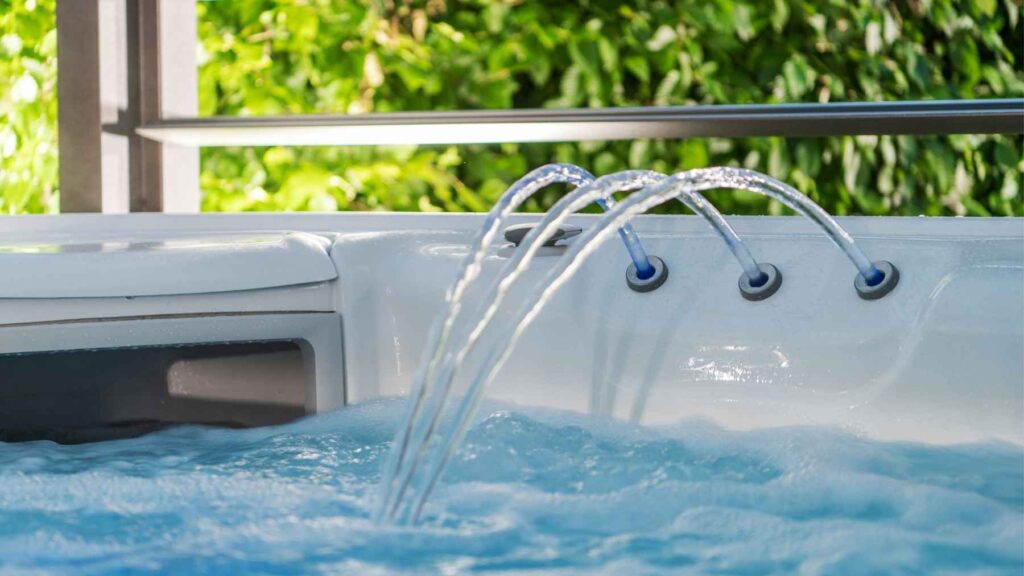
Maintaining water quality doesn’t have to feel like a chemistry class. It just needs to be part of your regular routine.
Here are 7 tried-and-tested methods to keep your cold plunge water clean, safe, and ready for every session.
1. Use A Water Circulation Pump
Stagnant water is the enemy of clean. Without movement, bacteria, algae, and grime settle and multiply.
That’s where a circulation pump changes everything. It keeps water in motion, distributes any additives evenly, and slows bacterial buildup.
What this really means is that you’ll need to change the water less often, and it stays fresher longer.
Look for a submersible pump designed for cold tubs or small pools.
Even a low-flow model that cycles water for an hour or two a day makes a huge difference.
If you’re using an open barrel or large bin, you can DIY it with an aquarium pump or a small fountain motor.
Not only does circulation extend the life of your water, it supports better thermal regulation and keeps floating debris from settling.
2. Add Hydrogen Peroxide (Food Grade)
Let’s talk disinfectant — the clean kind. Food-grade hydrogen peroxide (3% to 35%) is one of the safest and most effective ways to sanitize your ice bath without compromising skin health.
Unlike chlorine or bleach, it breaks down into oxygen and water — nothing harmful left behind.
That’s a win for your skin barrier and the environment.
Dosage tip: Add ½ cup of 3% hydrogen peroxide per 10 gallons of water. Re-dose every 3–5 days or after heavy use. If using 35% concentration, dilute very carefully, a few teaspoons is plenty.
Want receipts? The Environmental Working Group (EWG) lists hydrogen peroxide as a low-hazard disinfectant ingredient in consumer cleaning products.
This is one of my go-to solutions because it’s effective, affordable, and easy to manage. Just store it safely, away from kids and sunlight.
3. Install A Filtration System
Think filters are overkill for an ice bath? Not if you’re serious about long-term water hygiene.
A small filtration system does what your eye can’t: it traps dead skin, hair, oils, and microscopic grime that cloud your water over time.
And it runs quietly in the background while you focus on recovery.
There are a few types to consider:
- Mechanical filters (like sponge or mesh) trap physical particles.
- Activated carbon filters remove odors and some organic contaminants.
- UV sterilizers neutralize bacteria and viruses with light, no chemicals needed.
You can go as basic or as advanced as you like. Even a $50 inline pool filter hooked up to your pump can cut your water changes in half.
If you’re investing in your health, this is worth every penny.
Watch this video here to know how the water filtering device works.
4. Regular Skimming and Debris Removal
This one sounds obvious, but you’d be surprised how often it’s skipped.
Every time you use your ice bath, particles — skin flakes, body oils, stray hairs, maybe a bug or two, settle on the surface or float beneath it.
And once they’re in, they don’t just disappear. They rot. They feed bacteria. They make your water feel…off.
The fix is simple: skim your water every day using a fine mesh net or spa skimmer. You can find them for under $10, and it takes less than 30 seconds.
Think of it like brushing your teeth, a tiny effort that prevents a big mess later.
Clean cold plunge water starts here. Don’t let the basics slide.
5. Shock The Water Weekly (Natural Or Chemical)
You’ve heard of shocking a pool. Your ice bath needs the same treatment, just on a smaller, skin-friendlier scale.
Shocking simply means raising the disinfectant levels high enough to kill off the stuff that’s built up over time: bacteria, biofilm, and organic waste.
Here’s how to do it right, and safely.
If you’re going the natural route, use:
- 1–2 cups of 3% hydrogen peroxide
- Or a mix of ½ cup baking soda + ½ cup white vinegar
Let it sit overnight with the pump running, then drain and rinse if water is due for a change, or just let it circulate if you’re keeping the batch.
The goal here is to give your water a full reset, without introducing harsh chemicals.
If you do opt for chemical shock (like dichlor chlorine), be extra cautious. It works fast but can irritate sensitive skin and dry out the tub over time.
Always follow product instructions and allow 24 hours before using the tub again.
| Bottom line: Shock the water every 7–10 days or anytime it starts to look cloudy, smell off, or feel slimy. This keeps your cold therapy tub from becoming a biohazard. |
Here’s a detailed video discussing the use of sanitizer and hydrogen peroxide; you might find it helpful.
6. Add Essential Oils (Optional & Antibacterial)
This tip’s for the natural wellness lovers — and anyone with skin sensitivities.
Some essential oils don’t just smell great — they’re naturally antibacterial, antifungal, and perfect for boosting the cleanliness of your ice bath. If used correctly.
Try a few drops of:
- Tea tree oil – antifungal and antibacterial
- Eucalyptus oil – cooling, clarifying, and antimicrobial
- Lavender – calming and mildly antiseptic
But don’t dump it in straight. Oils don’t dissolve in water, and too much can create an oily film on the surface (which defeats the whole clean water purpose).
Always dilute in a carrier like vodka or a dispersing agent before adding. Around 5–10 drops per 100 gallons is plenty.
This isn’t essential for everyone — but if you love the spa-like touch and want an added layer of natural protection, it’s a solid bonus.
Quick Note: Always choose 100% pure, skin-safe oils. No synthetic blends, no heavy fragrances.
7. Keep Your Body Clean Before Entering
Want to cut down 70% of the water contamination in your tub instantly? Take a quick rinse-off before stepping in. That’s it.
It’s honestly the most overlooked step in ice bath maintenance.
Think about it: you wouldn’t jump into someone else’s bath without washing off first, right? So don’t do it with your own recovery tool.
Whether it’s a 30-second outdoor shower, a rinse with a garden hose, or a fast pass under the bathroom tap, it makes a huge difference.
Especially if you’re using the same water across multiple sessions or sharing the tub.
Your skin could be the real contaminant. Clean it, and your water stays fresher, longer.
How To Clean The Ice Bath Tub Itself
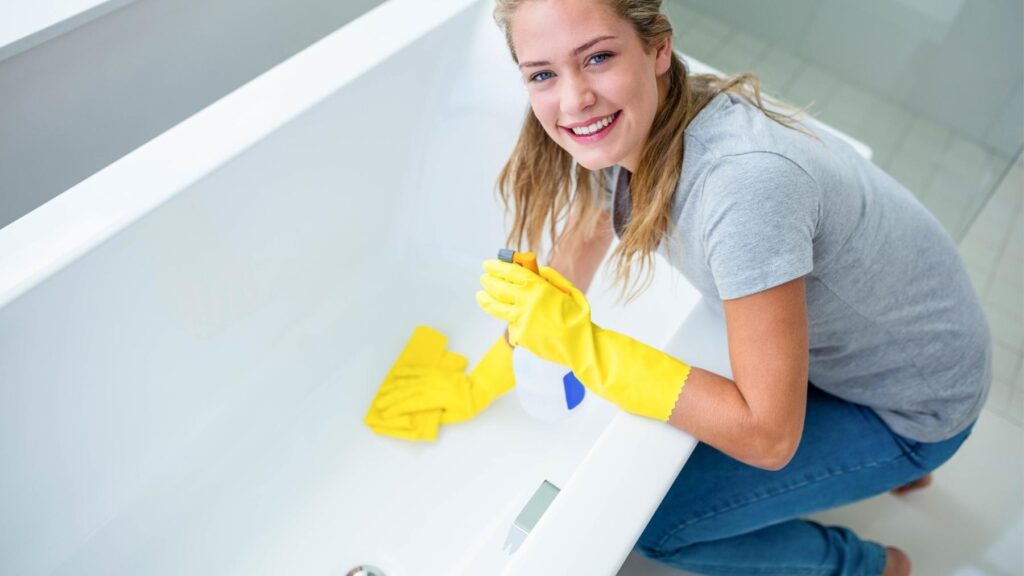
Now let’s talk about the tub itself, the part we sit in, sweat in, and sometimes forget entirely.
Even if your water looks fine, the tub surface can hide a lot: biofilm, mold spores, mineral buildup, and oils that cling to the walls.
Over time, this gunk breaks down your water quality and invites bacteria to thrive.
Here’s how to clean it properly, without harsh chemicals:
Step-by-step ice bath cleaning process:
- Drain all water completely. Pull out the plug or use a wet/dry vac.
- Scrub the interior with a soft sponge and a mix of white vinegar + baking soda.
- Rinse thoroughly to remove any residue on the surfaces.
- Disinfect using a diluted hydrogen peroxide solution (¼ cup per gallon of warm water).
- Dry it with a clean towel or let it air dry in the sun. Moisture left behind = mold risk.
If you’re using a wooden tub, use a cleaner specifically made for sealed wood.
For plastic or fiberglass? Stick with gentle, non-toxic disinfectants to avoid damaging the surface.
This should be done:
- Weekly if you’re reusing water often
- Monthly if you’re changing water every 2–3 days and keeping up with skimming
And don’t skip it. Even clear water can’t compensate for a dirty tub.
Best Natural Ice Bath Cleaning Agents (And What To Avoid)
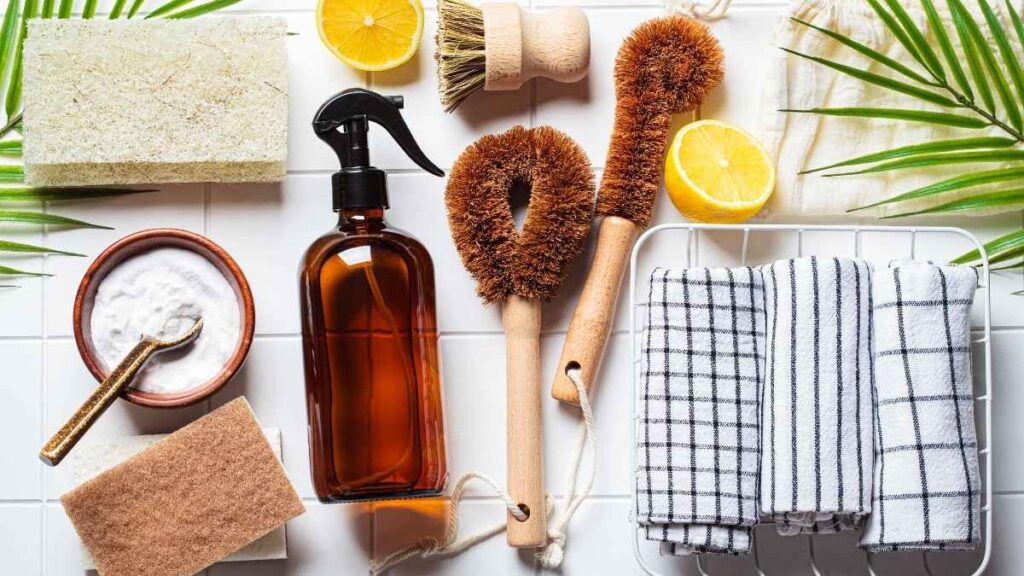
You don’t need a lab-grade disinfectant to keep your ice bath clean.
In fact, some of the harsh chemicals people use are doing more harm than good, especially to your skin.
The trick is choosing natural disinfectants that clean effectively without leaving behind harmful residues or irritating your body.
Here are the nurse-approved, natural options that work:
- Hydrogen peroxide (3%) – Kills bacteria, viruses, and biofilm without toxic buildup.
- White vinegar – Great for dissolving mineral deposits and mild disinfecting.
- Baking soda – Natural deodorizer and mild abrasive for scrubbing.
- Essential oils – Like tea tree or eucalyptus, in diluted form only.
These options are cheap, effective, and safe enough to use regularly, especially if you have sensitive skin or existing skin conditions like eczema or psoriasis.
Now, here’s what to avoid:
- Bleach – It’s powerful but unnecessarily harsh. It can degrade plastics, ruin seals, and irritate skin.
- Chlorine pool shock – Unless you’re following exact dilution guidelines and using commercial-grade filtration, it’s risky.
- Strong scented cleaners – Many leave behind toxic fragrances and chemical residues that linger in cold water.
| Bottom line: Clean doesn’t mean chemical-heavy. When in doubt, stick to simple, safe ingredients you’d trust on your skin because they end up there anyway. |
Maintenance Schedule – Weekly & Monthly Tasks
You don’t need to be obsessive to keep your ice bath clean, you just need a schedule.
A simple, repeatable routine keeps things manageable and helps prevent problems before they start.
Here’s a breakdown you can follow:
| Task | Frequency | What To Do |
|---|---|---|
| Skim debris | Daily | Use a mesh skimmer to remove hair, leaves, and skin particles |
| Rinse your body before use | Every session | Quick shower or hose down before entering the tub |
| Add hydrogen peroxide | Every 3–5 days | Use ½ cup of 3% per 10 gallons, more if water looks cloudy |
| Shock the water | Weekly | Use hydrogen peroxide or vinegar + baking soda combo |
| Check filter/pump | Weekly | Rinse or replace as needed to keep flow strong |
| Full clean & scrub | Monthly or as needed | Drain, scrub, disinfect, and air dry the tub |
| Remember: Stay ahead of the gunk. Regular maintenance isn’t about being perfect, it’s about preventing the nasty surprises that come from neglect. |
And trust me, nothing ruins an ice bath faster than opening the lid and finding slime in the corners.
Final Thoughts – How To Keep Ice Bath Water Clean?
An ice bath is only as effective as the water you soak in. If it’s murky, unfiltered, or filled with hidden bacteria, you’re not recovering — you’re risking irritation, infection, and poor results.
The good news? Keeping your cold plunge water clean doesn’t take much.
A rinse before entry, basic filtration, the right natural disinfectants, and a consistent weekly routine go a long way.
Clean water protects your skin, supports your recovery, and makes every session something you actually look forward to.
So don’t skip it. Protect the investment you’ve made in your health, and let your ice bath do what it’s meant to do. Safely, effectively, and every single time.






